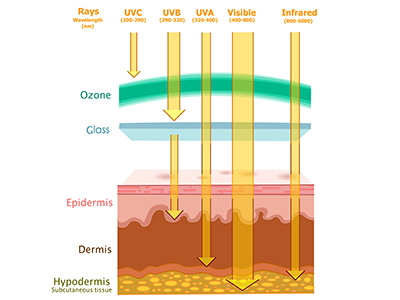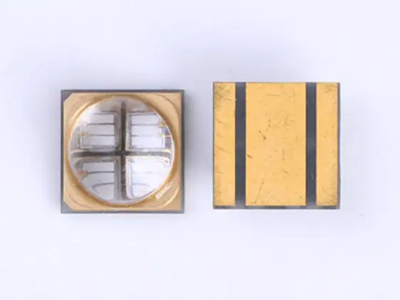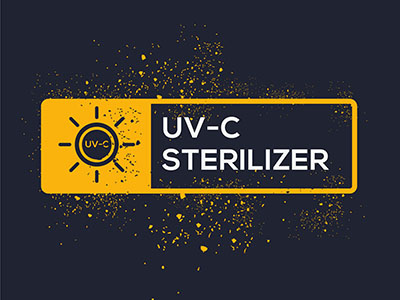There are four ranges to UV light – UV-A, UV-B, UV-C and Vacuum-UV:
· UV-A – otherwise known as black light, it has the longest wavelength, ranging between 315nm to 400nm.
· UV-B – known as the medium wavelength, it ranges between 280nm and 315nm.
· UV-C – the shortest wavelength, it ranges between 200nm and 280nm.
UV-C is germicidal, meaning it can be used effectively as a disinfectant to kill microorganisms, such as bacteria and viruses.
When the DNA of microorganisms absorbs UV light, it stops them from being able to reproduce and duplicate, thereby preventing their growth.

Small tip about UVC LED lamp beads
1. UVC LED lamp beads fast surface sterilization equipment
According to the information, this product is the current disinfection sterilization time is fast, which uses a special optical process UV LED, can be inactivated within 7 seconds, such as smartphones or smooth surfaces on the device more than 99.9% of the germs. For public places under the disinfection and sterilization of small personal digital products has important significance.

2. The birth of a point sterilizer that effectively blocks airborne germs
The body of the sterilizer is equipped with UVC LED light beads, which effectively irradiate and inactivate germs through cyclones (air ducts) and reflections in the tube. The body is small enough to work without leaking UV light into external structures, making it especially suitable for use in spaces and scenarios where people coexist.
3. UVC sterilization principle
Different types of UV-C disinfection can work depending on the scale of the solution being implemented. However, the principles of how UV-C disinfection works remain the same.
An LED produces a pre-selected wavelength from a small amount of electricity. The LED then emits UV-C photons through the water that penetrate the cells and damage the nucleic acid in the microorganism DNA.
As these cells cannot replicate, it renders the harmful microorganism inactive. As a result, UV-C LEDs allow for high-intensity radiation to kill the bacteria in seconds, and its effectiveness is measured in LOGs.

4. UVC LED lamp bead------future mainstream components
UVC LED lamp bead is more properly solve the traditional mercury lamp sterilization time is long, unstable wavelength, the product can not coexist with the use of people, easy to pollute the environment after replacement and other deficiencies. Without changing the design of the original product, the product can be upgraded to a sterilization function. Effectively enhance the competitiveness of the product in the same industry. Small size of UVC LED can be combined into a sterilization module. In a short period of time, to achieve super sterilization capacity, to achieve more efficient and rapid sterilization efficiency. Widely used by global sterilization brands. It is believed that in the next few years, UVC LEDs will be widely used and accepted by the public.